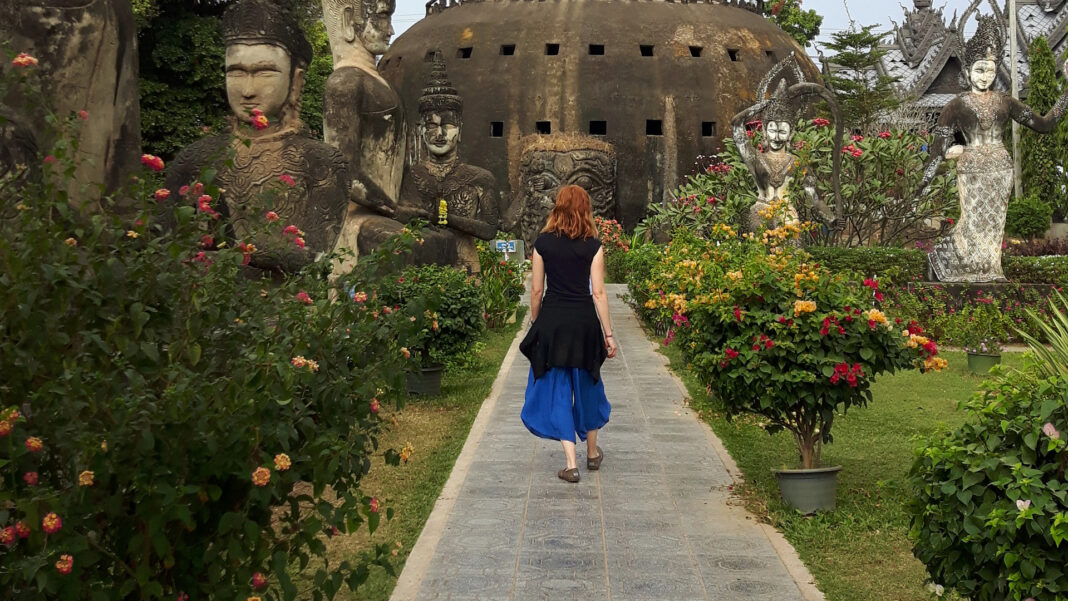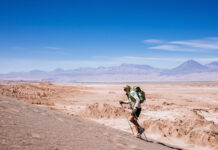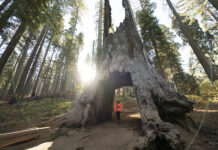Looking out over the mountains that rise from the water on either side of the river, a jungle of greenery covering their limestone slopes, I sit back in my kayak and stop paddling. I want to remember this moment—to capture the feeling of awe and appreciation for such beauty.
The more I travel, the more I cherish the serenity of the low-key locations, the ones that don’t fall
on the typical tourist trail.
Laos—many people don’t know how to pronounce it, let alone where to find it on a map.
I too might have struggled to place Laos on a map before researching the trip that would take me there. I knew little about the country that sits landlocked between Thailand, Myanmar, Cambodia and Vietnam, sharing its northern border with industrial giant, China.
And maybe it was better that way—to enter the country with no expectations.
One of the few remaining communist countries in the world, the borders of Laos first opened to foreign tourists in 1988. Since then, Laos has seen a boom in the tourism industry, although it’s not particularly obvious when visiting.

The country feels untouched by the western hand of modern convenience and tourist traps. Although ex-pats and backpackers dot the cities and towns, they blend into the surroundings rather than acting as an interruption as they do in so many other places.
Travelling with my husband and a group led by a local man from Southeast Asia, I fly into Vientiane, the capital of Laos and home to less than one million people. The city sits along the Mekong River, which separates Laos from Thailand and runs north through the country.
Vientiane is a unique city. You’ll find visible French influence from France’s colonization in the late 19th century as well as traditional Buddhist temples, like Pha That Luang, an impressive gold-covered stupa from the 3rd century. Although quite a grand monument, it’s not the first thing that comes to mind when I think of Vientiane. That honour goes to a site 25 kilometres from the centre of the city.
Wat Xieng Khouane Luang, better known to tourists as Buddha Park, is home to more than 200 marvellously carved statues.
Stepping into the park, I’m amazed. There is a bizarre and intricate collection of statues. Some are clear representations of Buddha, while others are more mystical and have Hindu influences. There are statues with four arms, statues that have serpent bodies and human heads, statues holding weapons and some posed dancing. There are giant statues that reach into the skies and others quite small. There are animals too: elephants, snakes, alligators.
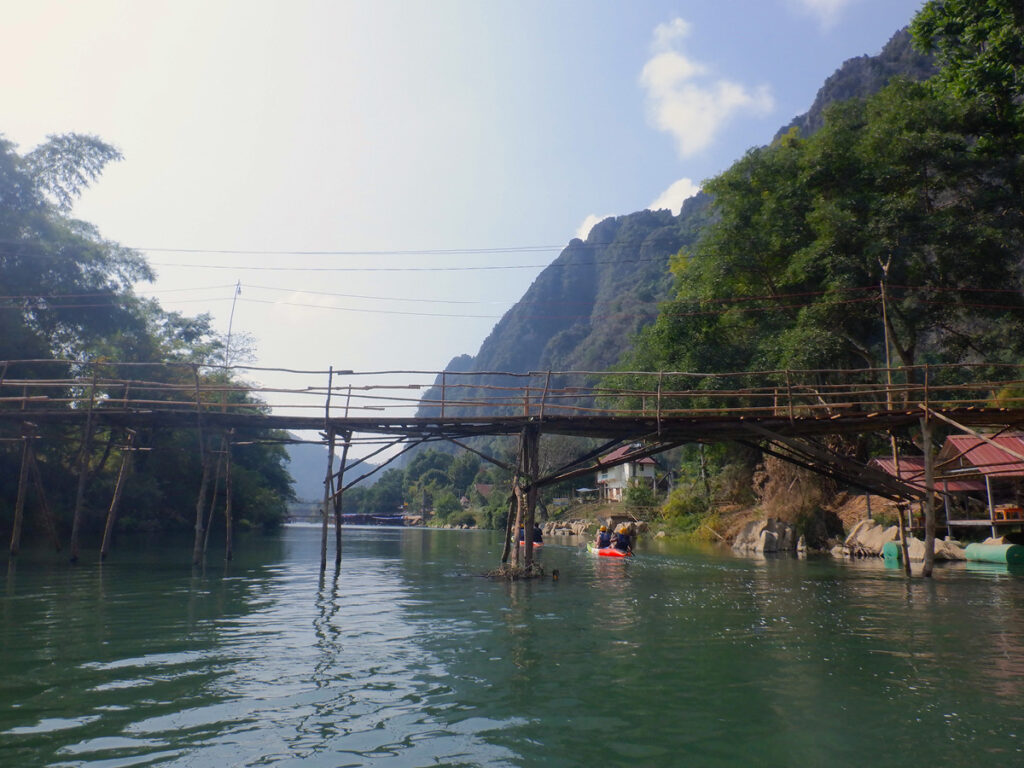
But I am most fascinated by a carved tree that sits atop a large concrete dome and stretches high above the park. A face maybe six feet tall is carved into the side of the hollowed-out dome, its mouth the entrance.
I step through the mouth, mindful of the teeth. There are dozens of statues inside, but I’m more interested in following the narrow staircase that winds along the walls. Reaching the end of the staircase, I’m spit out onto the roof, the tree statue just above my head. Before me is the entirety of Buddha Park. It’s beautiful, and I sit, admiring the palm trees, flowers, and bushes that grow among the statues.
Laos is an adventurer’s paradise, with much of the country covered in mountains and river valleys, making it the perfect destination for trekking, biking, boating and exploring. So, although Vientiane is a fascinating city, the true magic of this landlocked country cannot be felt until stepping outside the bustle of the capital.
The sun is setting as I arrive in Vang Vieng. On the banks of the Nam Song River, hot air balloons speckle the orange evening sky, and limestone mountains act as the backdrop to the quaint and atmospheric Laotian town.
Early the next morning, I climb into the back of a windowless truck, plastic recreational kayaks stacked on metal racks above me. My companions and I are dropped off at the banks of the Nam Song River where we’re given a short safety demonstration before setting off.
Our journey will take us 10 kilometres down the river.
The water is calm and flat most of the way, which allows me to enjoy my surroundings. My husband sits in the back of our kayak, and I’m splashed with every flip of his paddle. It’s refreshing though, as the sun is strong.
At times we come across rapids, although the water level is so low that most are barely more than a ripple.
The entire time we’re surrounded by limestone mountains that seem to reach higher the farther we kayak. Lush forests crowd the river. The only noise comes from my group and occasionally children playing along the shore.
Up ahead some locals wait on the shore, kayaks lined up beside them, and I know our paddle is about to come to an end. It’s only now that I allow myself to acknowledge the dull ache in my arms from the hours paddling on the water.
Certain that I have seen the best Laos has to offer, I am awed again a few days later visiting the Kuang Si Waterfalls outside of Laos’s fourth largest city, Luang Prabang.
Home to about 70,000 people, Luang Prabang is situated on the Mekong River and is a popular hiking and biking locale, but what has many people flocking to the city is the Kuang Si Waterfalls.
Known for the turquoise blue waters, cascading waterfalls and tranquil pools, the Kuang Si Waterfalls is a spot of incredible natural beauty. I hike to the top of the tallest waterfall, some 200 feet up. It’s hot and humid, and sweat drips from my face and runs down my back as I climb the steps. Reaching the top, there’s barely another tourist around, although there is a natural pool that looks inviting. Slipping into the water, I’m refreshed by its cool touch, and I swim towards a swing that hangs over the turquoise waters, little fish nibbling at my toes.
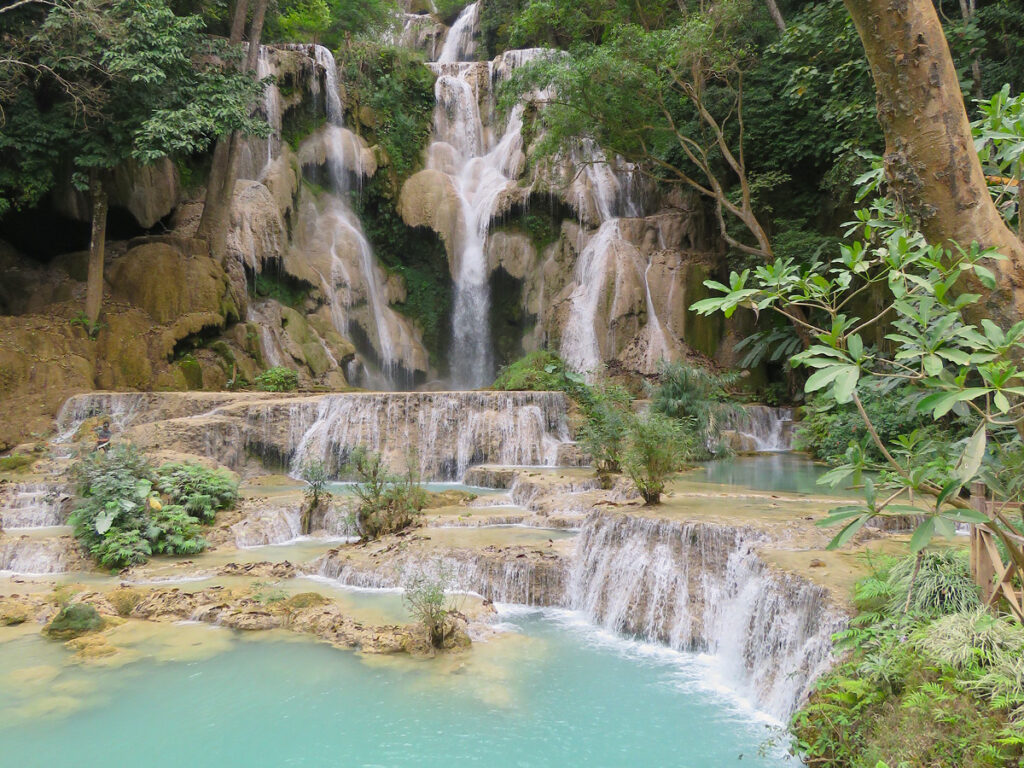
I climb onto the swing and let my feet dangle into the cool water. For the second time since arriving in Laos, I’m hit with an overwhelming admiration for this country I knew so little about.
But now I do know about Laos. I know about its beauty. I’ve seen its nature, met its people and learned about its customs, and what I can say is that such a place truly is an undiscovered paradise.
Tips & Good to Know
- When travelling with a Canadian passport, you need a visa to enter Laos, which can be obtained at the international airports in Laos and some border crossings that are open to foreign travellers. When I travelled to Laos, the visa cost $100 USD, and only crisp, unsoiled bills were accepted.
- There are areas of Laos that are not safe for travellers.
Visit https://travel.gc.ca/destinations/laos for travel updates. Generally speaking, the areas I visited are safe for tourists. - Laos is the most heavily bombed country in the world per capita, and there are still unexploded Vietnam War ammunitions being discovered in the countryside, especially along the border with Vietnam. When travelling outside of
the main centres, be conscious of this and consider a guide. - The Kip (LAK) is the national currency of Laos, although
USD is generally accepted in major cities. Make sure to exchange your Kip before leaving Laos, because our guide warned us that it would not be accepted for exchange in neighbouring countries. - Laos is a very inexpensive country. You can find incredible meals for a few dollars.
You May Also Like Top Vegan Travel Destinations
Photography by Emily Meyer
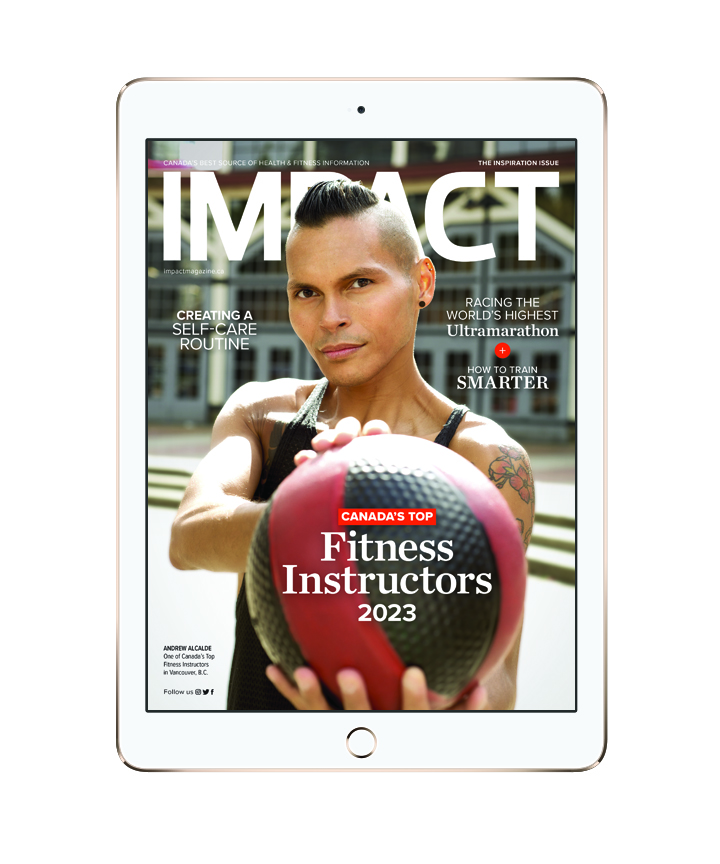
Read This Story in Our 2023 Inspiration Issue
Read about our 2023 Canada’s Top Fitness Instructors – our top 30 from across Canada! How to Train Smarter in 2023, Yoga Nidra for What Ails You, Racing the World’s Highest Ultramarathon, our favourite plant-based recipes and more!

